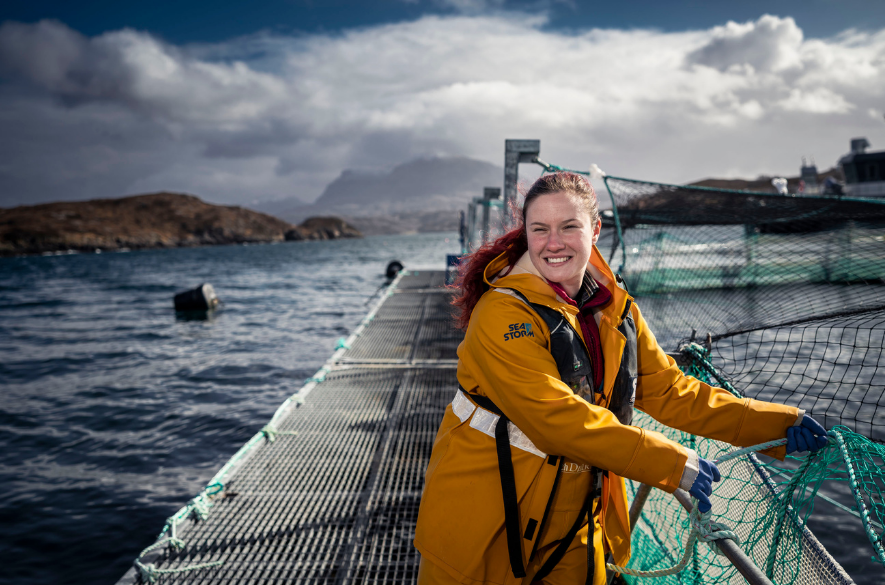Scottish salmon farm Loch Duart has just agreed a programme with the West Sutherland Fisheries Trust (WSFT) for the monitoring and auditing of its weekly sea lice count activities and the resulting data. Loch Duart enjoys farming some of the oldest salmon sites in Scotland from their base in Sutherland, North West Scotland. Badcall Bay, home to their head office, has been farmed since 1975. The WSFT, established in 1996 to monitor and protect wild fish stocks, uses scientific programmes and guided fishery management plans which have a significant, positive impact on wild salmonid populations in the area.
Loch Duart partnered with the Fisheries Trust in 2018 on the sea trout tracking project in Loch Laxford and is now inviting Trust biologists onto their sites to monitor the farmed stock health checks, involving sea lice monitoring.
“This independent audit fits Loch Duart’s policy on stewardship of the environment and transparency to local stakeholders,” stated Mark Warrington, Loch Duart’s Managing Director. “The initiative is a continuation of our support for all bodies involved in caring for the local
environment.”
Dr Shona Marshall, Senior Biologist at the Trust, commented:
“We believe that being able to observe routine sea lice counting on a regular basis on farm sites will allow us to comment objectively on the quality of the lice data that is being submitted. It will also help us to better understand what is happening in our sea lochs and what the level of potential lice impacts on wild fish might be.”
Sea lice monitoring – current practice
The levels of sea lice on Scottish salmon farms including Loch Duart’s, have been published on a voluntary basis through the SSPO since 2013 with details on a site-by-site basis being available since 2018. At the end of March 2021, it became a statutory requirement for farmers to report lice counts to Marine Scotland on a weekly basis, no later than one week in arrears when the Fish Farming Business (Reporting)(Scotland) Order 2020 came into effect.
The procedures for counting sea lice are laid out in the industry’s Code of Good Practice and Loch Duart’s farm personnel are fully trained in this procedure and in the correct identification of sea lice and their various life stages.
Sea lice monitoring – new procedures
Despite this ever-increasing level of transparency on data and long-established industry routines, there have been criticisms that the counting of sea lice by farmers themselves lacks independence. Some critics claim that the reported data is not wholly reliable. The new auditing provided by WSFT is a further commitment from Loch Duart which underlines their belief in the transparency of health check monitoring, and the importance of the reliability of sea lice data submitted to Marine Scotland. Whilst the Trust receives funding for its service work it is independent of those for whom it provides services.
Trust biologists will:
• visit 4 different Loch Duart farm sites each month to observe the routine, weekly sea lice
counts being carried out
• monitor the procedures being followed and the recording of the results
• review the data from all sites to establish consistency with the findings at visited sites,
given the prevailing environmental and biological conditions
The Trust will provide Loch Duart with a monthly report on their site visits and findings which will be published on both the Loch Duart and the WSFT websites.
If you would like to discuss your communications needs, you can reach our friendly team on +44 (0) 141 548 5191 or send us an email.
Find out more about what we do on the Services page and explore our Work.



